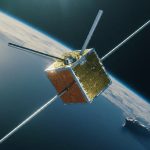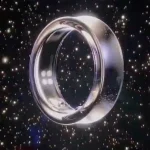Intuitive Machines’ uncrewed Odysseus lunar lander, while successfully touching down the lunar surface on Thursday, ended up unexpectedly positioned on its side. This unusual orientation raises questions about the spacecraft’s stability and potential impact on its mission.
Mission Success with a Twist
The private U.S. lunar lander touched down in Mare Tranquillitatis, a relatively flat area near a crater called Malapert A. Telemetry data confirms a successful landing, but the surprise came when NASA’s Lunar Reconnaissance Orbiter (LRO) later captured images of the lander’s new home. Odysseus clearly rests on its side, a deviation from the intended upright position.
What Happened?
Intuitive Machines CEO Steve Altemus acknowledges the tipped-over position but maintains optimism. Analysis suggests a legpad caught on the soft lunar surface during the final descent, causing the lander to settle unevenly. It’s unclear if the lander sustained damage, but Altemus says they’re working closely with NASA to assess the situation.
Next Steps: Adapting to Challenges
Intuitive Machines plans to proceed with its mission despite the setback. The lander carries several payloads:
- Scientific Experiments: Researchers from NASA and beyond have planned experiments designed for lunar conditions.
- Commercial Services Demonstration: Odysseus aimed to demonstrate lunar landing technology for future commercial missions.
- Data Collection: The lander’s sensors gather valuable data on the lunar environment.
The company will explore whether robotic instruments can function adequately from this position. NASA will offer vital assistance with imaging and mission support.
Lessons Learned
Though unintended, Odysseus’ landing provides valuable engineering insights for future lunar missions. Analysis of this touchdown will help refine landing technology for both crewed and uncrewed missions.
Resilience in Space Exploration
Space missions often encounter the unexpected, and Odysseus’ story highlights the adaptability required for space ventures. Intuitive Machines’ engineers and NASA are collaborating to make the most of the situation. Even from its sideways position, Odysseus has the potential to further science and lay the groundwork for future exploration.








